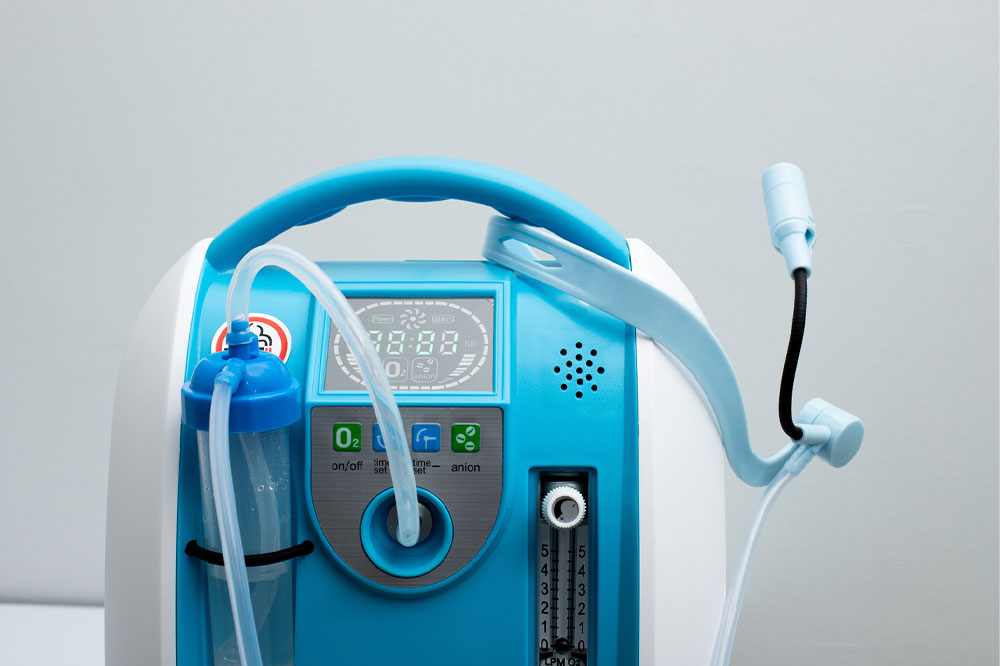Vital Tips for Using Portable Oxygen Concentrators
A lightweight, portable oxygen concentrator, often known as a POC, is a piece of medical equipment used to give oxygen therapy to patients who require a higher concentration of oxygen than is present in the surrounding air. It performs similarly to a residential oxygen concentrator but is more portable and occupies less space. Here are a few factors to consider when using such devices at home, outside, and when traveling:
Dangers of Using Oxygen Concentrators
Oxygen Concentrators are meant for use in the comfort of one’s home. Nonetheless, even when used responsibly, they always have the potential to inflict damage.

Fire
Oxygen is a highly combustible gas capable of igniting a fire without effort. Home fires that are sparked by the presence of oxygen can cause property damage, bodily harm, and even death.
Injuries
Both the oxygen concentrators and the oxygen storage tanks contain high pressure. If they receive sufficient damage, they may become potentially dangerous projectiles.
Contamination
The improper use of oxygen concentrator equipment raises the chance of becoming ill or contracting an infection. It would help if you replaced your nasal cannula and tubing per the manufacturer’s recommendations.
Toxicity
An abundance of oxygen or a deficiency of oxygen can be exceedingly dangerous and even fatal. Obtaining supplemental oxygen requires a doctor’s order. Ensure that you always adhere to your doctor’s advice about the amount and frequency of oxygen consumption.
Benefits of Using Portable Oxygen Concentrators
You may be intrigued to know why portable oxygen machines are considered “safe” to begin with. In any case, they produce medical-grade oxygen in the same manner as oxygen tanks, liquid oxygen tanks, and stationary oxygen concentrators.
Portable oxygen units are the most highly advanced oxygen delivery devices yet created. Since they result from decades of innovation and research, it should not be surprising that their preventative measures are technologically advanced. In modern portable oxygen concentrators, “pulse dose oxygen delivery” is one of the essential safety features. This equipment meticulously monitors your breathing rate and only delivers oxygen to your body when it detects your inhaling.
The primary objective here is to reduce energy consumption and prolong the life of your batteries, but doing so also delivers substantial safety benefits. If you drop your nasal cannula, the tube that delivers oxygen to your nose, the oxygen flow will cease. This is because the cannula is hooked to the nose. Oxygen is an oxidant, which raises the risk of combustion in every substance it comes into contact with. This is impossible since existing oxygen delivery techniques, such as oxygen tanks and liquid oxygen tanks, are incapable of achieving this.
Important safety characteristics of portable oxygen units are their dimensions and shape. POCs are often relatively compact and have a boxy appearance, which makes them easy to conceal under one arm and less likely to cause injury if they are accidentally bumped into. Because they are so light, you will never need to wheel them or worry about carrying a cart, which offers a significant risk of tripping for you and those nearby.
Tips for Using Portable Oxygen Concentrators
Safety is an integral aspect when it comes to operating such devices, so adhering to these tips will help:
Use Either the Mask or Cannula
The mask must fit snugly over the individual’s face, with no holes around the edges that could enable air to escape. It must be the correct size, and the nose clip and straps that tighten it must be adjusted so oxygen can pass through unimpeded. The nasal cannula must be repositioned to lie higher in the nostril to improve oxygen levels.
Take Precautions When in the Washroom
It is of the utmost significance to prevent the lightweight, portable oxygen concentrator from coming into touch with moisture or humid air. On the other hand, extreme situations may necessitate that you utilize your unit while showering or bathing. This will be easier and safer for you if you have a detachable showerhead, an exhaust fan in your bathroom, and long tubing leading to your cannula.
Stay Away From Unattended Fires
Never use an oxygen concentrator near an open flame, such as gas stoves, campfires, charcoal grills, or candles. You should not cook food that requires refrigeration or use a microwave while breathing oxygen.
Don’t Store Concentrators in Confined Spaces
A functioning and lightweight portable oxygen concentrator can rapidly deplete the oxygen in a small space, which can quickly become hazardous for you and any other humans or animals who may be there. As we previously discussed, you should avoid placing a concentrator next to anything. This is because you want to prevent the unit from overheating by any means possible. Whenever the concentrator is operating, ensure that there is at least 10 inches of free space around it.
Stay Away From Pollutants
Contact with pollutants and allergens during oxygen therapy is not only dangerous but will almost probably cause injury. If it happens by chance, always remove your cannula, turn off your oxygen concentrator, and leave the device in a separate room.

